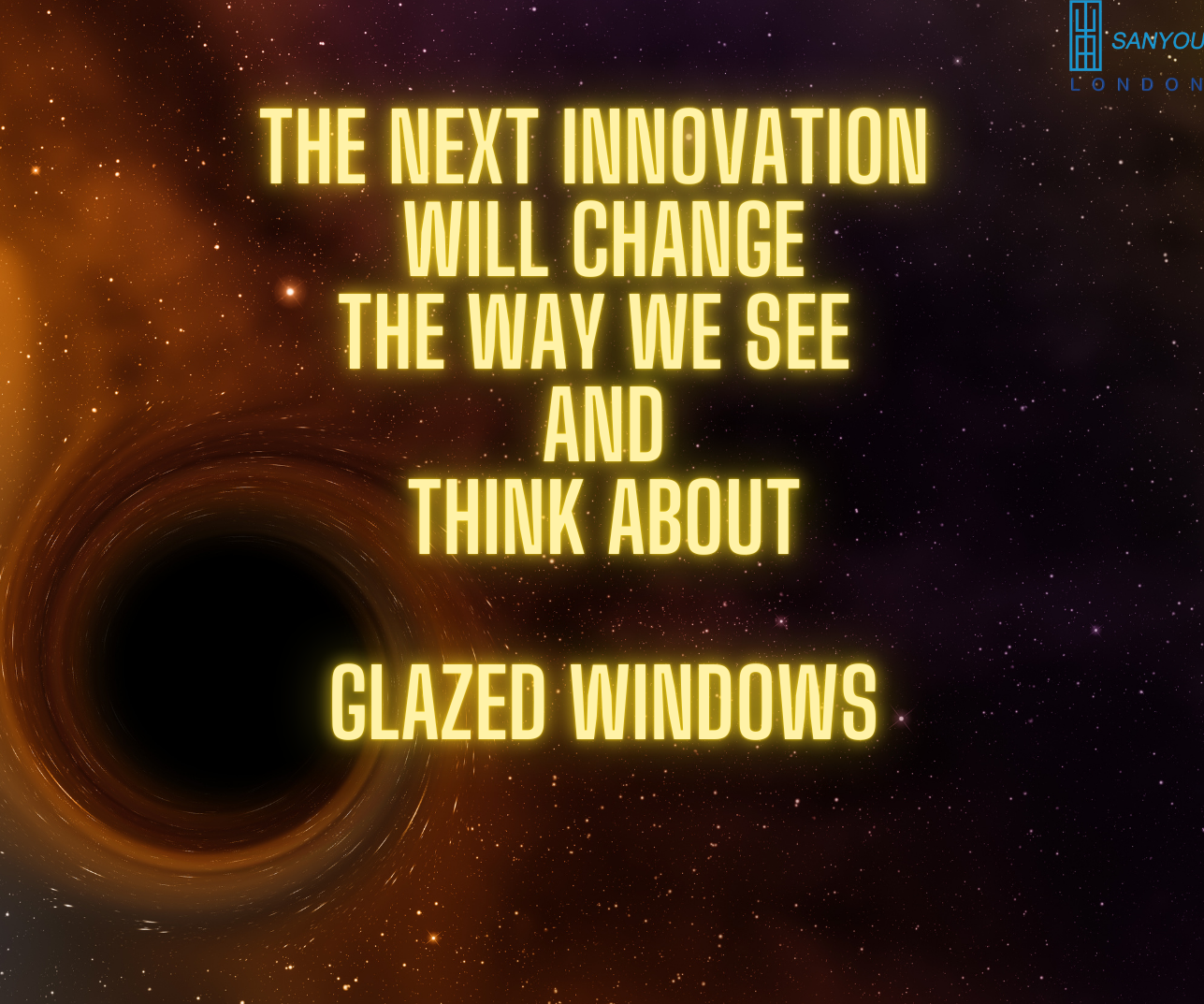
My innovation that changes how we see glazed windows
Why this begins with a feeling, not a spreadsheet
We all know the elegance of floor-to-ceiling glass. We also know the cold shoulder it gives in winter and the glare and heat it invites in summer. In Munich, speaking at a winter conference, I could feel the cold radiating off an enormous glazed wall. In Dubai, stepping outside on a scorching afternoon, the same scale of glazing felt like a radiator in reverse—dragging coolth out of the building as fast as the chillers could supply it. Inside my hotel room, generous panes were paired with ordinary curtains; the air-conditioning never rested.
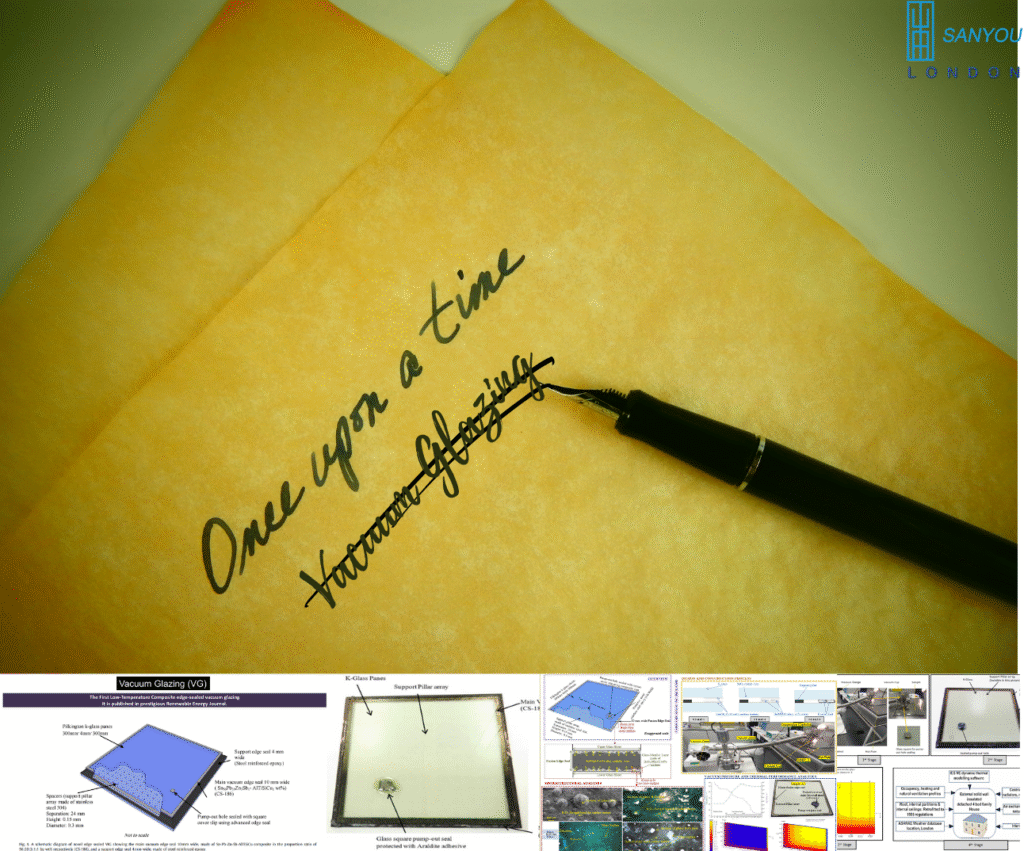
Years of my research in vacuum glazing point to a simple truth: better thermal control at windows changes both comfort and bills. Yet swapping glass is expensive, slow, and often impossible—especially for listed buildings and long-let towers with active tenants. The industry defaults to what is practical, not what is ideal.
So here is the practical leap.
No need to replace windows: meet the Vacuum-Insulated Curtain (VIC)
VIC is a curtain with a true vacuum-insulated core, designed to cut heat flow at the glazing line while keeping everything renters, hoteliers and facilities teams value: daylight when you want it, privacy when you need it, and zero structural upheaval.
- Installs like a normal curtain. No scaffolding. No glazing contractor.
- Portable. If you move home or change tenancy, VIC goes with you.
- Custom-made. Any width, drop or stack; shaped bays and corner returns included.
- Launched at Saudi Projects 2025 in Riyadh. The motivation is clear in Saudi Arabia, the UAE, Qatar and Kuwait: towers with wide glass façades bleed cooling energy. VIC addresses that head-on.
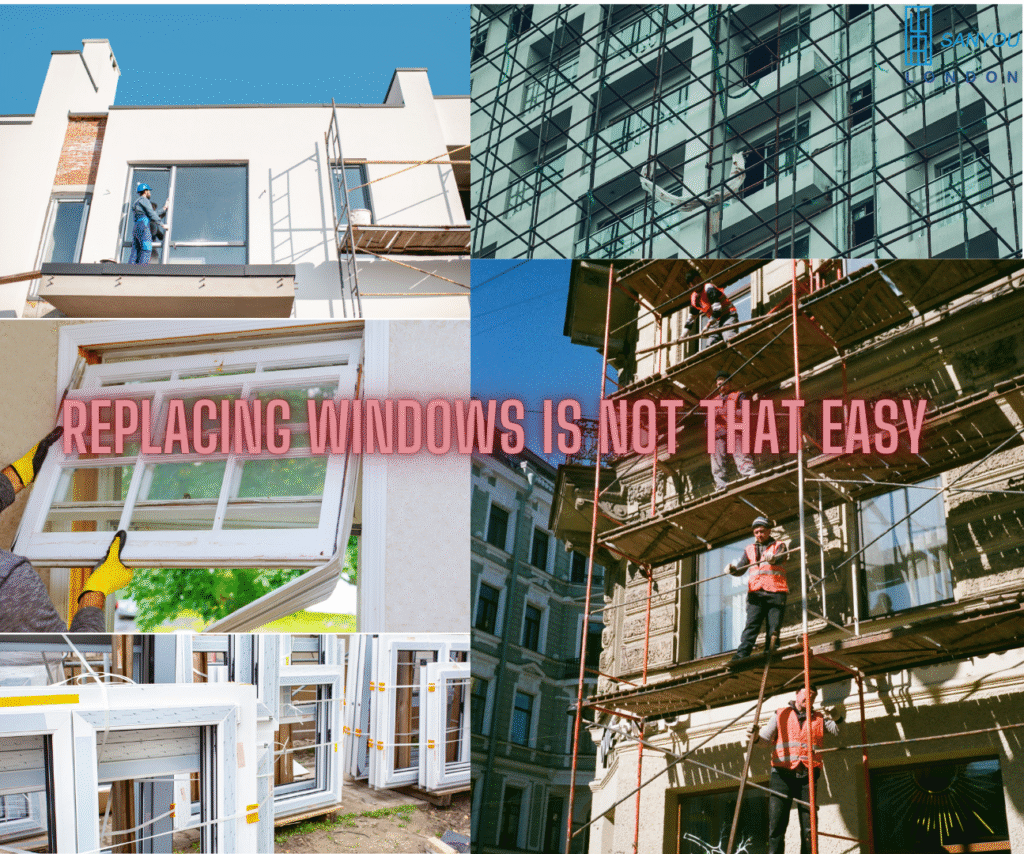
What is inside the curtain
VIC uses a double-layer construction:
- A back layer of durable cotton forms a stitched grid of two-hundred-millimetre pockets. Each pocket accepts a three-millimetre vacuum-insulation panel. Panels are removable and replaceable, so maintenance is straightforward. The back layer can also be integrated into an existing curtain if you love your current fabric.
- A front layer is your decorative face—silk, satin or polyester—so the curtain looks and behaves like a premium drape. Pocket spacing of ten millimetres allows natural folding and smooth tracking.
Optional side-channel trims or magnetic edge seals are available where you want extra control of edge leakage around the reveal.
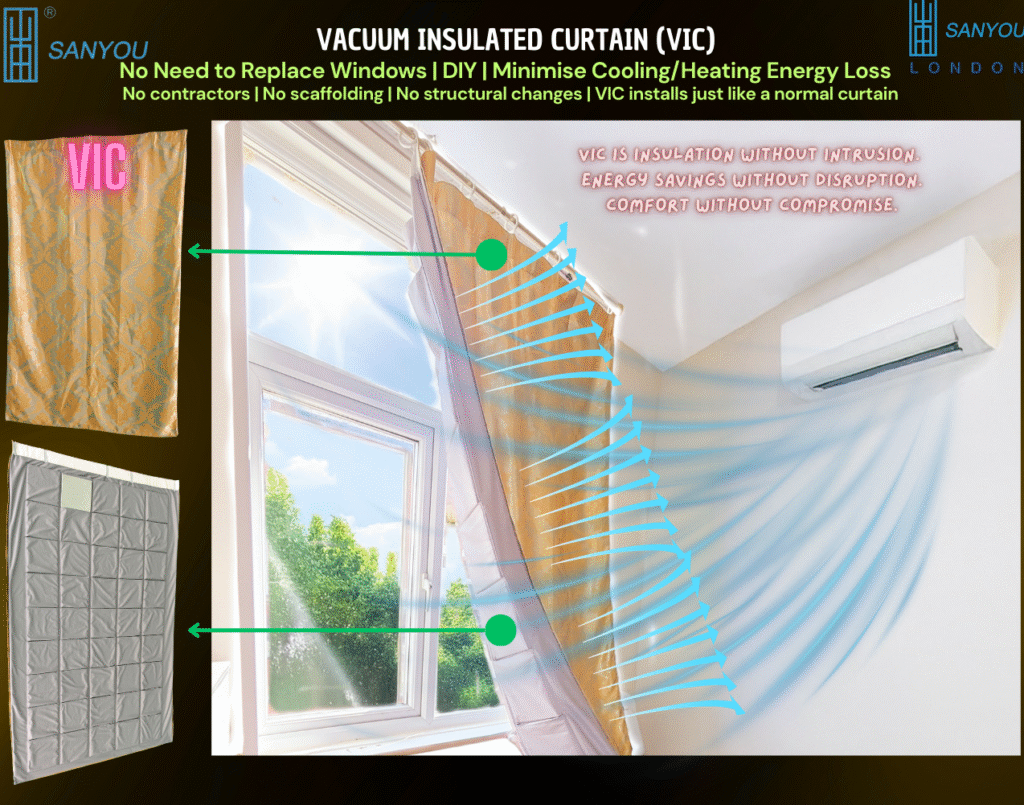
Why not just add permanent exterior shading?
In my Riyadh hotel, an exterior cladding screen permanently blocked direct sun. It worked for daytime heat—but at night the screen killed the view. With VIC you choose: pull the curtain to throttle heat gain when the sun bites; draw it back when you want city lights, daylight and horizon. You keep the architectural intent of the glazing rather than giving up on it.
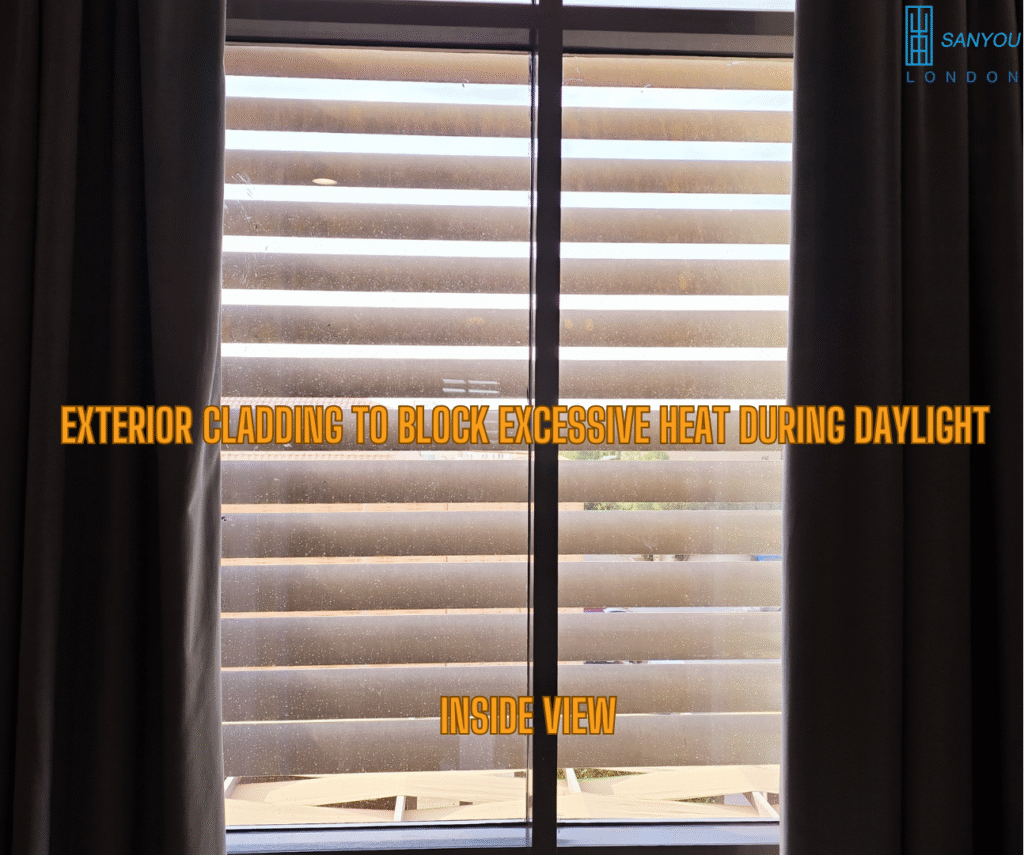
What VIC changes in real rooms
Comfort you can feel. By reducing radiant exchange with the cold or hot glass, VIC lifts the mean radiant temperature of the room in winter and suppresses that hard radiant glare in summer. Occupants report fewer drafts, calmer temperatures near the window, and the ability to lower or raise the thermostat set-point without discomfort.
Plant that breathes easier. When heat gain is throttled, HVAC runs softer; compressors spend more time idling rather than sprinting back to set-point after every solar surge. In cold climates, night-time heat loss through glass is likewise reduced.
Acoustics improve. A vacuum core also dampens airborne sound through the curtain plane. Street-facing rooms and hotel corridors feel quieter when VIC is closed.
A solution for heritage and rented stock. Listed façades and long-lease flats are notoriously hard to upgrade at the glazing line. VIC avoids consent battles and contractor diaries; it simply hangs on the track.
Hot climates, cold climates—two patterns of use
- Hot-arid cities such as Riyadh, Dubai, Doha and Kuwait City: pull VIC during the solar peak to blunt heat gain; open it in the evening for view and night purge when conditions allow.
- Cooler, windy cities such as Edinburgh, Manchester, Hamburg: pull VIC at night and on cold days to stabilise room temperatures; open for daylight and solar gains when the sun is helpful.
Design notes for architects, hoteliers and facilities managers
- Tracks and hardware. VIC runs on standard curtain tracks or poles with reinforced headings. Motorised options integrate with guest-room control systems for timed operation.
- Reveals and returns. We supply pre-made returns to cover short side walls and reduce bypass paths.
- Cleaning. Front fabrics are chosen for cleanability and colour fastness; back grids are protected from handling and can be spot-maintained.
- Fire strategy. Curtain assemblies are selected to meet your room-use fire and smoke requirements; we specify appropriate face fabrics and linings for hotel, residential and office settings.
- Glare and daylight. Pair VIC with a sheer on a second track for daytime glare control; use VIC for thermal control during peak loads.
- Access and safety. No drilling near glass edges; VIC relies on the track and side trims. For high-rise hotels, all work is from the room side, out of guest hours.
Where VIC belongs first
- Hotels and serviced apartments with high cooling loads and high guest expectations for quiet, stable rooms.
- Prime residential towers where façade lines and covenants prevent deep internal linings or replacement glazing.
- Heritage townhouses where original sash windows must remain; VIC improves warmth and preserves the interior aesthetic.
- Offices with over-glazing on west elevations; draw VIC for late-afternoon peak, open after hours for night-time city views.
- Student halls and key-worker accommodation where quick, non-disruptive retrofits are essential.
A simple pilot you can run in a fortnight
- Select ten rooms on a solar-exposed elevation; install VIC on five, keep five as controls.
- Log HVAC runtime and room temperatures at fifteen-minute intervals; take thermographic snapshots at peak hours.
- Survey occupants or guests for comfort, noise and sleep quality.
- Compare bills and complaints over two comparable weeks.
Most teams see reduced peak chiller calls, fewer comfort complaints, and a clearer view-comfort compromise in their favour.
Frequently asked—clear answers
Will VIC remove the need for blinds?
No. Blinds handle glare and visual comfort; VIC handles thermal comfort. Many sites use both on separate tracks.
Can I keep my favourite fabric?
Yes. The insulated back grid can be fitted behind your chosen front fabric, provided it meets our weight and fire guidance.
What about condensation?
By moderating surface temperatures and edge flows, VIC reduces condensation risk on the room side. Persistent moisture problems should be investigated independently.
Does it work with sliding doors and curved bays?
Yes. We pattern-cut the grid and front fabric to match door spans and curves, with side seals to maintain performance.
From Riyadh to your rooms: why this matters now
At Saudi Projects 2025 we introduced VIC to a region that embraces fast, forward-thinking energy solutions. The Middle East’s glass-heavy architecture makes the case obvious: cooling energy is too precious to waste at the window line. Europe and the UK share the challenge from the other side of the thermometer; heating energy is too costly to throw away at night.
VIC is a non-intrusive, high-impact answer that lets buildings keep their glass and their comfort.
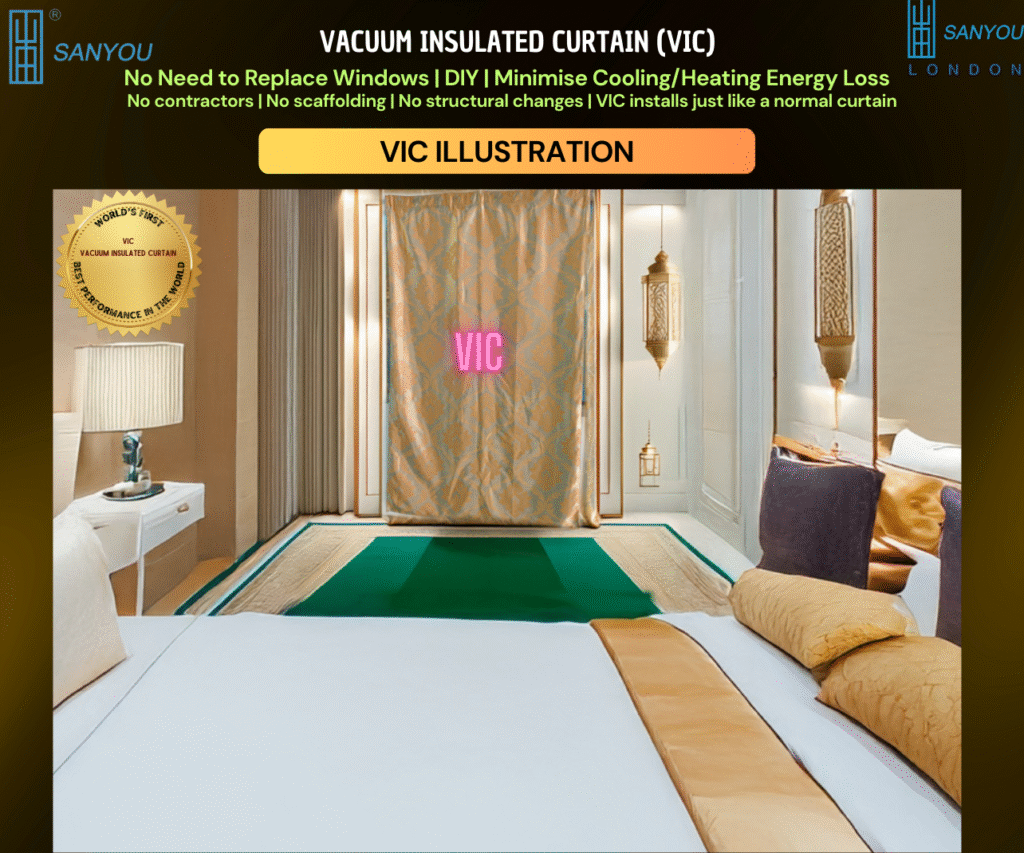
Ready to specify or trial VIC?
- Contact our Customer Service Team for samples, track options, side-seal details, and tailored price quotations.
- Prefer a direct conversation? You are most welcome to email or phone Professor Saim Memon; we will review drawings or room photos and design a measured pilot for your property.
- Explore the full range, specifications, purchasing process, videos and FAQs at www.sanyoulondon.com.
Keep the view. Keep the comfort. Cut the energy loss. That is what the Vacuum-Insulated Curtain (VIC) delivers—quietly, elegantly, and without a single pane being replaced.
Share

Author
Prof. Dr. Saim Memon
PhD, CEng, FHEA, MSc, BEng(Hons), PGC-TQFE, GTCS, MCMI, MIET, MIEEE, MInstP, IBPSA, APCBEES, MPEC
CEO | Industrial Professor | Inventor | British Scientist | Chartered Engineer | Qualified Teacher | Chief Editor | World Speaker | Pioneer in Vacuum Insulation Energy Technologies

